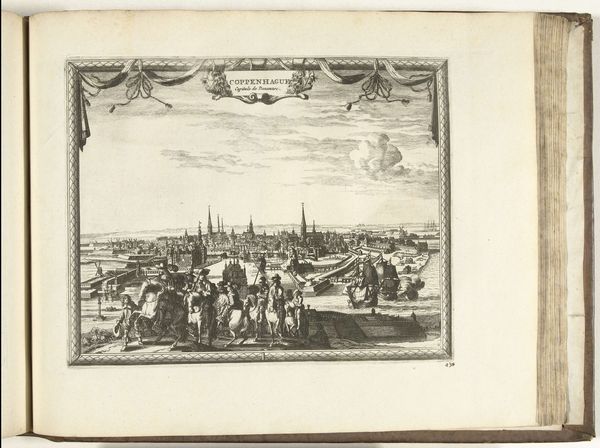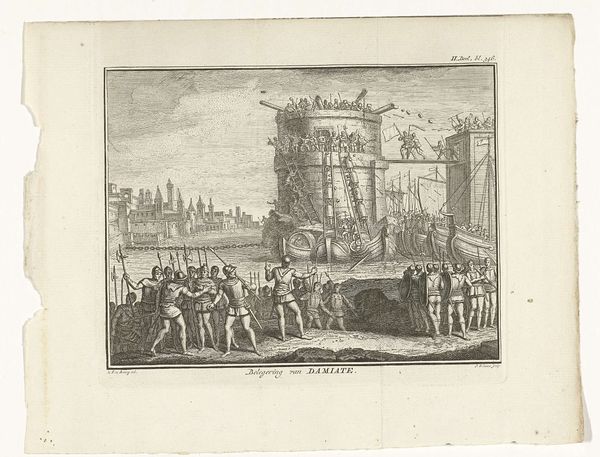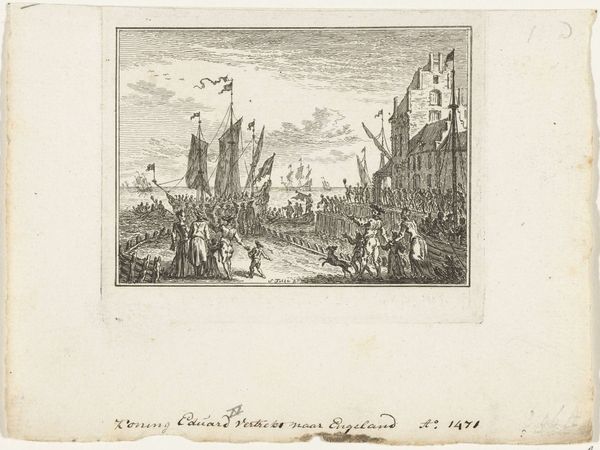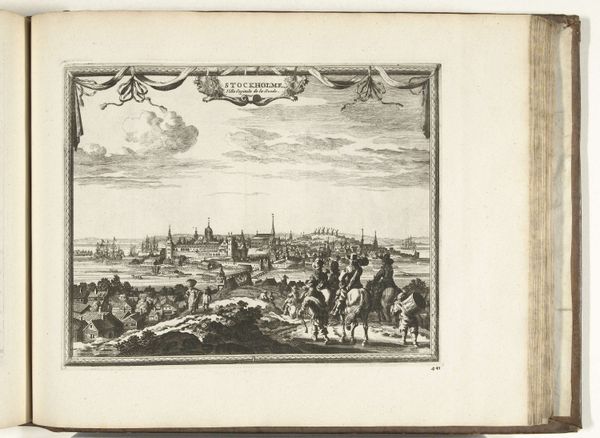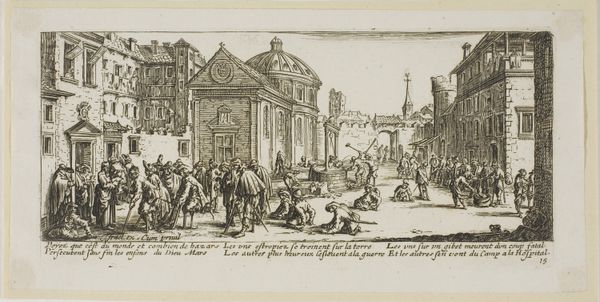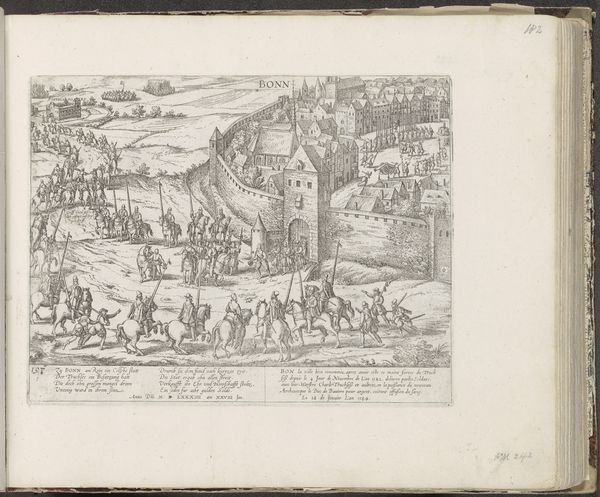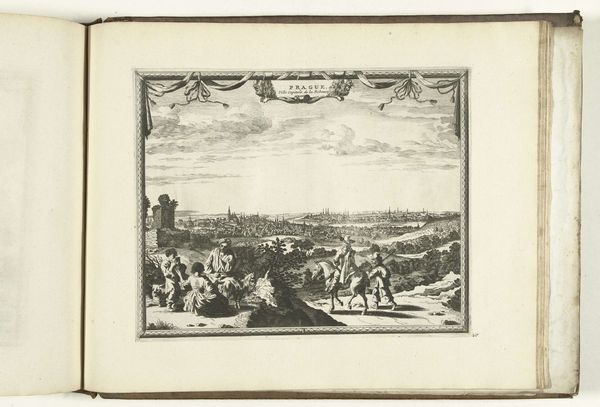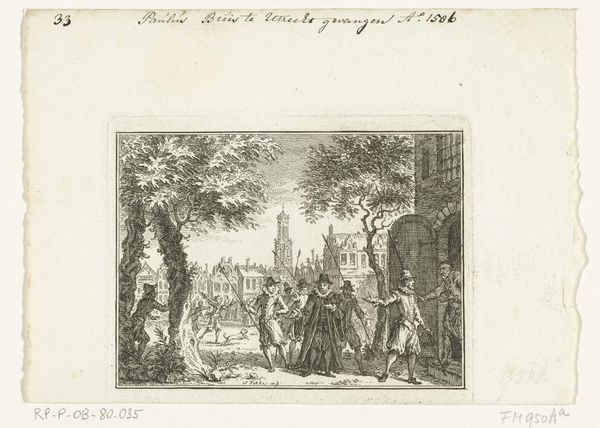
print, engraving
#
baroque
# print
#
figuration
#
line
#
cityscape
#
history-painting
#
engraving
Dimensions: height 153 mm, width 194 mm
Copyright: Rijks Museum: Open Domain
Editor: This print, made in 1689 by Pieter Pickaert, depicts the arrival of Queen Maria of Modena in France in 1688. It's a fairly small engraving and the linear detail is quite striking, but the composition feels…staged? Almost theatrical. What can you tell me about this piece? Curator: Indeed. This image is powerful precisely because it reveals how royal entrances were carefully orchestrated political events. The "theatricality" you perceive isn't accidental, it's essential. Think about what an image like this would communicate. Editor: That the Queen's arrival was a significant occasion that demanded this grand reception, which makes it more than just simple travel documentation. It shows status. Curator: Exactly! And it highlights power. Consider the backdrop of the city and the welcoming crowds against the wider social and political landscape. Maria was the Catholic wife of King James II of England, whose pro-Catholic policies were meeting fierce resistance, ultimately leading to the Glorious Revolution. Editor: So her "arrival" in France isn't simply a journey, it is her seeking asylum. Curator: Precisely! The French court, led by Louis XIV, was Catholic. So, this engraving promotes French political influence and also serves as propaganda. Images like these were not merely documenting events; they shaped public perception and reinforced the legitimacy of the powerful. Notice how the artist highlights key figures and architectural elements to convey strength and authority. Who controlled the imagery? Editor: I see. The engraver and his sponsors controlled what and how the event would be received. Art wasn't just reflecting culture, it was actively shaping it. Curator: An important distinction! It shows us the value of the artist's agency. Editor: Absolutely, I hadn't considered the image's role in constructing narratives beyond simply illustrating them.
Comments
No comments
Be the first to comment and join the conversation on the ultimate creative platform.
